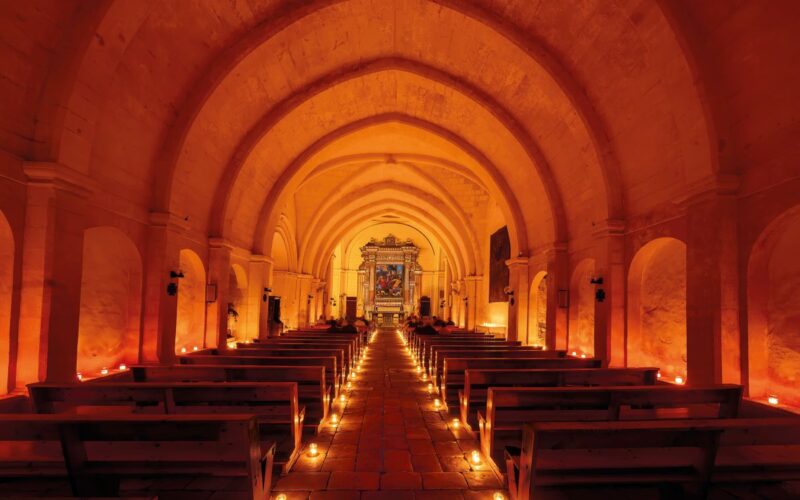150 Stowed Away is a new publication by the Salesians of Don Bosco, Malta, about the published work of a celebrated photographer of our isles, Daniel Cilia.
This new book, Cilia’s 151st, is, for him, both a celebration of his photography and publishing history so far (because it continues apace), of the people with whom he has worked on these many projects and the fascinating discoveries he made along the way.
It is also a record of the career of this remarkable photographer, his love of the Maltese islands, and his character and curiosity, and the commitment and courage he has shown as he fights to promote and preserve the archipelago’s heritage. Within the pages, for example, he describes standing in front of a chainsaw operator to save a small Byzantine catacomb that would otherwise have been destroyed.

Cilia’s stories are told through 150 beautiful photographs that ‘got away’ woven, book by book, with memories, discoveries, surprising facts and short anecdotes ranging from the archaeological significance of a carbonised bread roll to a debate about a ‘magical hat’ in the Metropolitan Cathedral Archive in Mdina. Should wearers beware, or does it bring good luck?
Did you know, for instance, that there was a marble meridian measurement line in the Order’s Throne Room in the Grand Master’s Palace that uses the sun to mark the passing months? Or that the mathematician Leonardo Bonacci, known as Fibonacci, is credited with introducing Arabic numerals to Europe?
“When I am putting together every book, there will be a picture that didn’t make it for whatever reason,” Cilia explains, and these constitute the core of 150 Stowed Away. The idea was suggested by Salesian Father Charles Cini SDB, editor and publisher of both this and several of Cilia’s previous titles. The title, Stowed Away, refers to the photographs ‘put by’ but not forgotten, whilst evoking the idea of ships on our horizons, hidden people and secrets to uncover.

Some of the photos were destined for a book’s cover, and then an alternative was used; another – of a shark caught in a fisherman’s line – was omitted from a book to avoid giving the impression that sharks were common in Maltese waters, and once, says Cilia, a photo was simply forgotten! Others still didn’t pass muster at the time, but due to advances in technology can now be part of this collection. Sometime one shot was chosen from a pair and the other, put aside at the time: would you have made the same choice?
Alongside the striking imagery, the narrative offers both insights into the views and artefacts Cilia has photographed and into Cilia’s own photographic journey as he worked with authors, NGOs and many others who shared his appreciation for our past and present. The tales he tells give an insight into the mind of a photographer as he embraced digital composition, graphic design and aerial photography, into the effort required to capture the perfect shot, and the constraints of the publishing process.
With one photo representing each of Cilia’s 150 books, from historical treatises on the Grand Masters and goldsmiths to overviews of Casa Rocca Piccola in Valletta and contemporary art in Gozo’s old prison, there are unexpected perspectives and surprises.
The book unfurls, like a magic carpet, and the photo that escaped from Daniel’s very first book in this back catalogue is pure joy – Gozo – A Photographic Guide (1989) – shows five carefree young boys playing, largely barefoot, on a bike in the Gozitan countryside. It’s a glorious image: the colours are nostalgic, the boys’ pleasure is tangible – indeed, the photo had won first prize in a Malta Photographic Society competition with the theme ‘Happiness’.

“Looking back to nearly 40 years ago,” Daniel comments, “this is the perfect it example of the Maltese saying Kemm konna aħjar meta konna agħar – when life gave less, we somehow lived more! However, Daniel explains, the publisher felt it wasn’t suitable for a book aimed at tourists.
Reading on, you’ll find blue seas and ships, sinuous stairs and Grand Master Jean De Valette’s Sword, flint knives, holy relics and a Phoenician curse.

One shot that didn’t make it into Book 45, The Malta Maritime Museum, Vittoriosa, shows a small marble ‘cannon’ from which fresh water flowed, adorned with a Latin inscription, “Why are you afraid, little boat? There is no fire here but water instead of shot.”
There’s also a hidden room in the Archbishop’s Paace in Mdina, the March Equinox at the Neolithic Temple of Mnajdra South, and the colosseum constructed at Fort Ricasoli in Kalkara for the filming of the blockbuster Gladiator, taken from the air. You’ll even discover pelicans, poetry and 18th century Chinese characters.

You’ll also find a striking photo of a tribe of human traffic cones at the spontanteous carnival in Nadur. “It’s a fun book,” smiles Daniel.

Another remarkable inclusion is the baffling shot from The Feast of the Shipwreck of St Paul, in which The Great Siege Monument in Valletta, depicting three bronze figures, is shown with a shadow the shape a rearing horse, a silhouette entirely at odds with the sculpture’s form. The how and why, I won’t give away. Yes, you’ll have to get a copy of this beguiling book to find out the backstory.
150 Stowed Away is now available in the islands’ bookshops.











